
20 April 2021
My last post was the Agnew branch of the family. This post is about the Searcy branch of the family – which dies out with me.
Pulaski Mississippi is pretty much in the center of the state and is in Scott County. The unincorporated town was named after Casimir Pulaski of revolutionary war fame and more importantly, the town is located 7 miles southeast of Morton – of Agnew fame. Whereas Morton was an incorporated town of some 2000 souls, Pulaski was country – the sticks, the boonies. When I was a kid it had two stores (one once owned by my Grandfather Searcy) a wooden school house that was abandoned when the county schools consolidated, and two churches – Baptist and Methodist. The Baptist, was of course, the larger congregation. The Methodist was so small it had circuit ministers who would come preach every two Sundays but the Baptist had a full time minister.
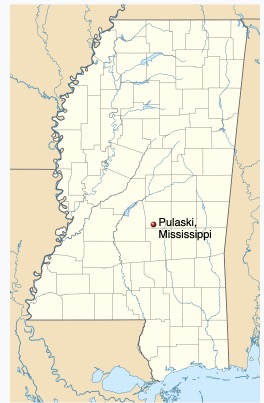
Today, it still has two churches but the school house has been torn down. However, at the junction of highway 481 and the Morton-Marathon Road, it has a post office (39152). It’s hard to believe but at one time it was a thriving community. Both my Grandmother and Grandfather taught at the school at one time and it’s where my Dad and his siblings went to school. The area around the town was also part of the great lumber industry of central and south Mississippi where longleaf pine were harvested. It had railroad spur lines running close by to haul timber to the mills.
I loved that old school house. I don’t remember how many classrooms it had but it had a huge auditorium (at least it was big to me) and even a science lab. I think I have related in the past about finding my Dad’s lab notebook and found he was performing biology lab experiments in high school that I only performed in college.
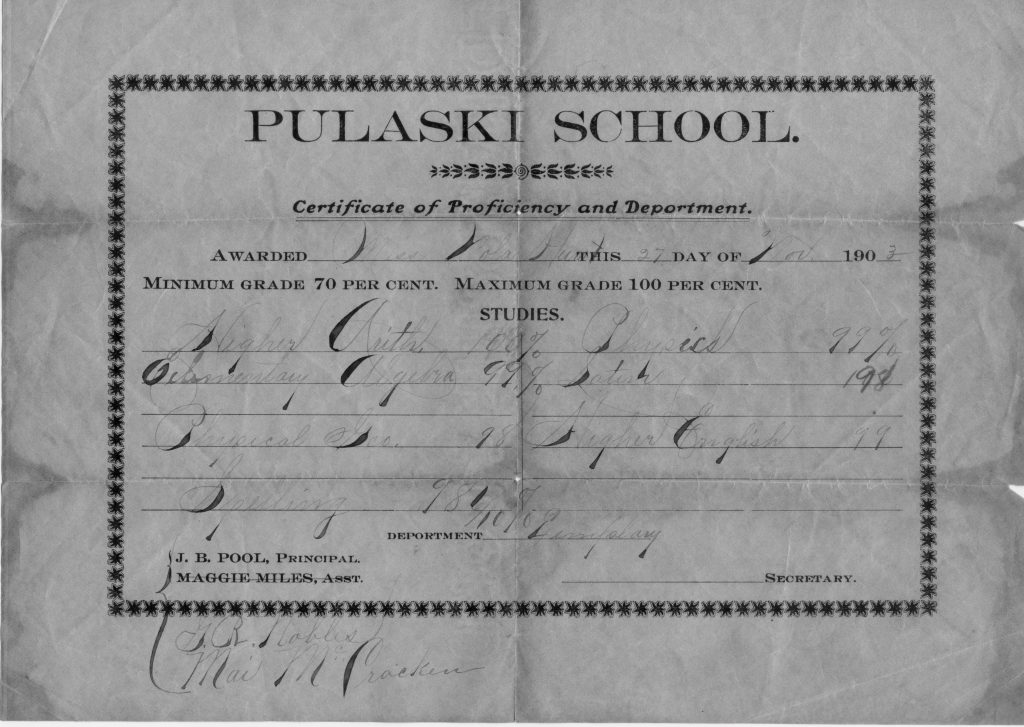
For a long time the old abandoned school house was the local community building. It still had electricity and socials would often be held there. It was also where the two churches would have dinner on the ground. I remember attending at least two of these. The area around the school had wonderful old oak trees shading the grassy areas and people would literally spread blankets on the ground. Food was always placed on tables and you simply walked up to the table and chose your dishes and went back to your place on the blanket. Of course, you had to be judicious in your picks so you didn’t offend anyone by not selecting their particular dish. There was always a little preaching along with the eating and the entire process would last several lazy, warm hours in the summer.
I remember one time attending a dance party at the school. It was only me, my cousin Sybil Jean, and three or four of her friends along with their brothers. Since there weren’t enough boys for every girl to have a partner, the girls would dance together and eventually even we boys would dance together. Nothing in the building was locked so anyone could walk in, throw a party, and leave as long as they turned off the lights before leaving. For an old wooden structure with no oversight, you would think it would have eventually burned down – either through malice or rat eaten wiring but it never did. I think a county supervisor eventually had it demolished. I do wish it was still there.
As you headed south on highway 481 (now called Pulaski Road) from the metropolis you started a slow rise as you crossed Strong River. I was told Strong River was the longest river in the state (other than the Mississippi) and according to Wikipedia, it is 95.2 miles long and feeds into the Pearl River and thus the Gulf of Mexico. Along the bottom of the Strong River as it meanders across 481 I remember seeing my first beaver dams and lodges. Beavers, at the time, were considered pests that would flood necessary farm land and you would often hear the booms from dynamite blowing up the latest rendition of the beaver dam in that low area.
The 481 bridge across the river at Pulaski was, at the time, a wooden affair that would startle you as your car drove across the loose fitting planks. My Grandad always told how, in his day, the bridge was maintained by the community since there was no state highway department as such. Someone from the state would come by and round up local farmers who would bring their equipment and they would work as a community on the bridge.
At the top of the hill outside of Pulaski is Searcy Hill. My Great Grandfather settled on that land in the late 1800’s and he built the house we always called “The Old Place” from timber cut from the land and sawn on site.
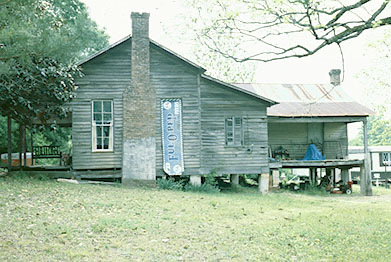
The front of the house was ground level but the land dropped away significantly towards the back so you could walk under the house as an adult and still stand upright. I’ve done that many times over the years and admired the hand hewn beams that form the sills of the house above. The beams were 12″x 12″ and were pegged into place.
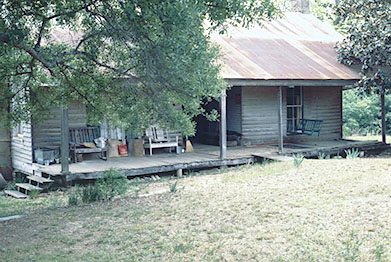
It was a classic old dogtrot house with an open breeze way between two sides of the house. The dogtrot was functional other than to dogs who would lie there to cool off. Any food that you wanted to cool you would place in the dogtrot – like homegrown watermelons! If you needed to further chill anything, you put it in a bucket and lowered it down into the well. Great Grandad dug the well by hand and it was 80 feet deep.
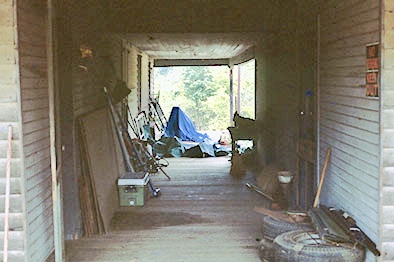
If you go look at it today, check out the window panes in the house. Some are relatively new because Dad replaced many of them but some are original to the house. Glass is considered an amorphous solid and over time, glass is affected by gravity. Some of the panes are paper thin at the top and thicker at the bottom. Dad always found most of the panes would fall out because the top would flow away from the fasteners at the top of the window.
As you face the house and to the left of the dogtrot was the front room. Grandmother Searcy’s quilting frame was in that room and raised to the ceiling to be out of the way until a bee was held. On the same side and behind that room was where Grandmother and Grandad slept when any of us kids slept over in the front room. Behind their room was the dining room and kitchen – all one huge room. The dining room table was huge – you literally could not reach across it. She cooked all her meals before sunrise on a wood burning stove.
The kitchen was sparse. It did have a fire place but what I most remember about it was the pie safe. Back then, refrigeration was rare and you stored things in a way to keep out the mice and yet keep things as cool as possible. The pie safe was the perfect answer. The doors were ventilated and mice couldn’t get in.
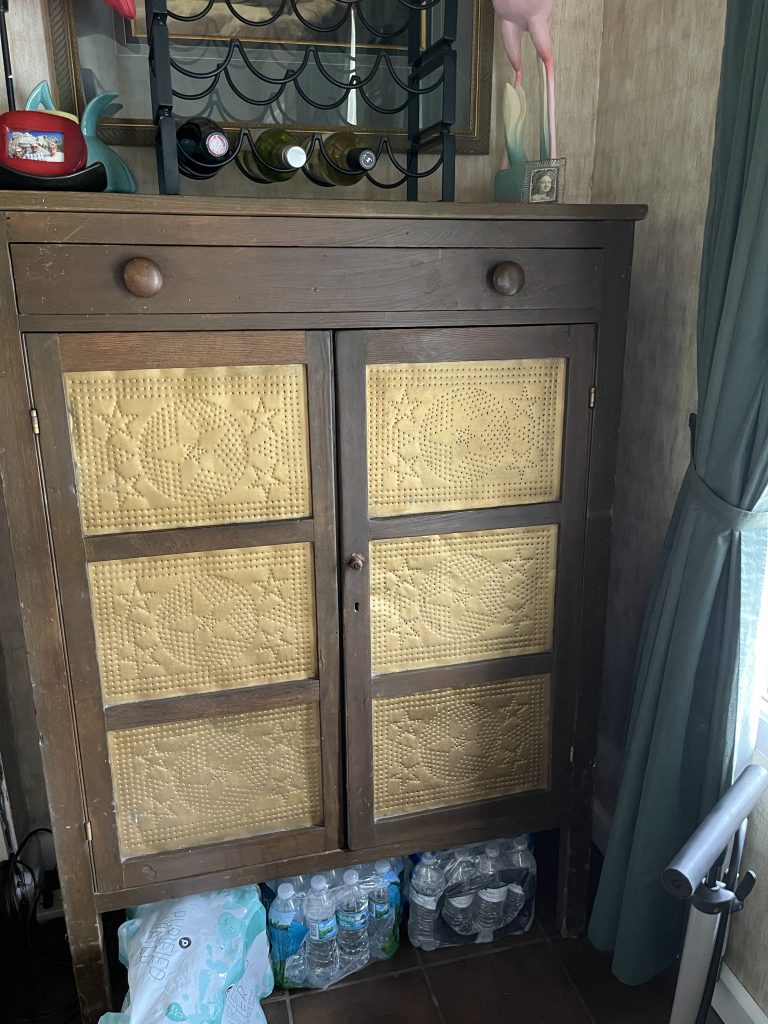
About 20 years ago, Dad was getting rid of some stuff and he asked me if I wanted anything. I immediately said the pie safe, the wash pot and the farm bell. He and Archie brought it down and I still have all three.
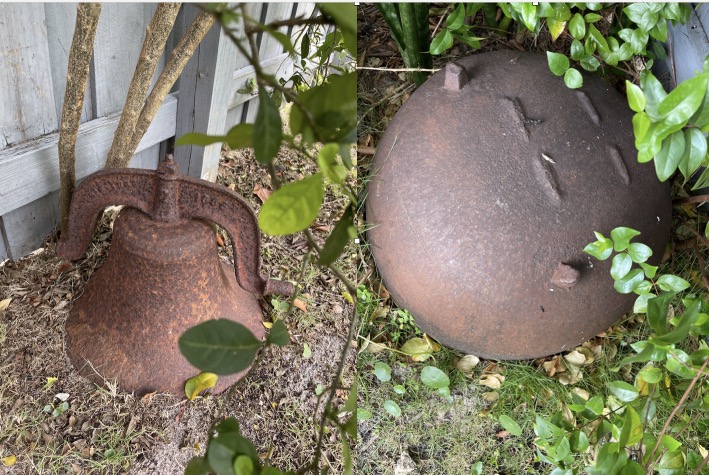
I don’t know exactly when Great Grandad built the house. The Searcy Cemetery across 441 has a sign that says 1885 but Dad told me that was off by a few years earlier. I assume the house predates the cemetery so the house was certainly built before 1883. Grandad was born in 1880.
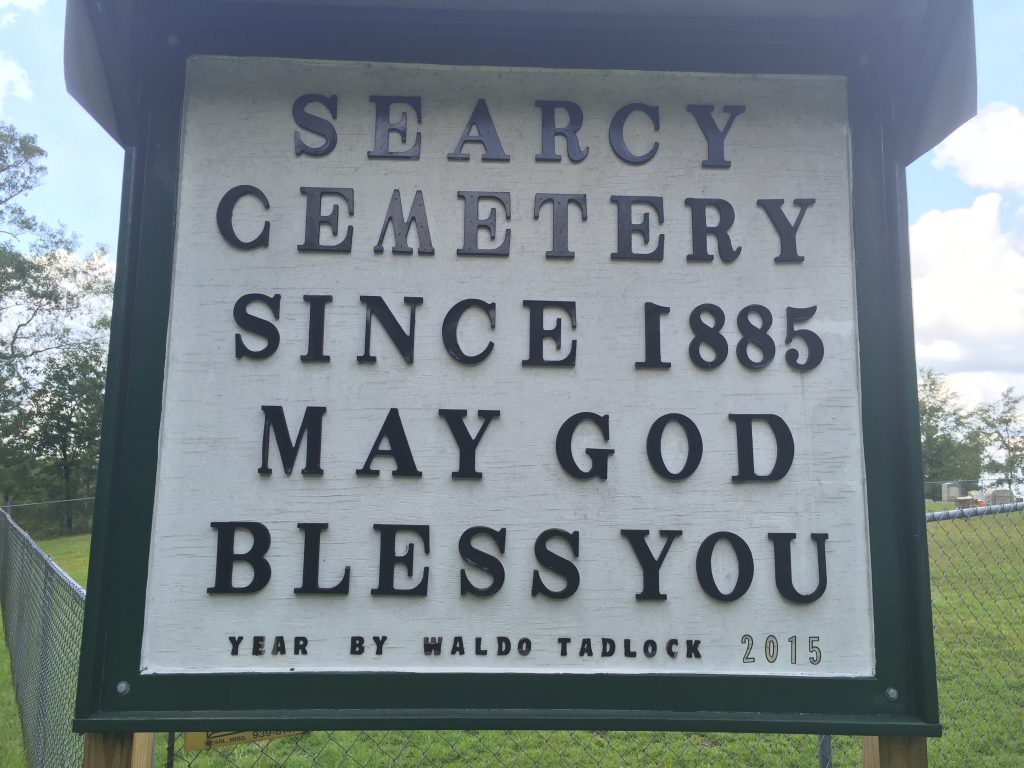
Grandad grew up at the Old Place and eventually took over the place. His farm consisted of 120 acres. Thirty acres was the home site and across the west side of 481 was 80 acres of farmed land which included part of some Strong River bottomland. He left the homestead to all three children and gave each of the three children 40 acres of the farmland.
Actually, there were four children. Grandad married Nola Eugenia Hurst. I assume the photos are their wedding pictures.
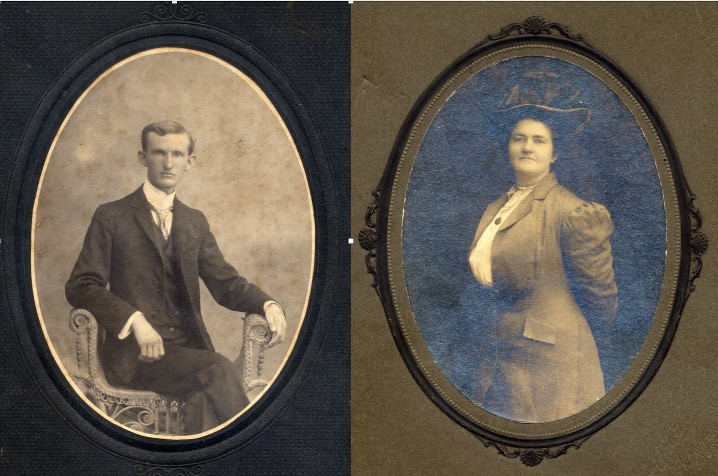
The first child was Albert Hurst Searcy in 1911. He was stillborn. The oldest of the three surviving children was my Aunt Sue, Ena Sue Searcy in 1912. Next came my Dad, Frederick Taylor Searcy, Sr. The Taylor comes from our Uncle Taylor Hurst, Grandmother’s brother.
Uncle Ray came along in 1919. He and Dad were two peas in a pod. When I was a kid walking down the streets of Morton, I would call out to my Dad and Uncle Ray would turn around.
I’ve related about my Dad joining the Civilian Conservation Corps but Uncle Ray was too young and ended up staying on the farm and plowing. When WWII broke out he was for a time stationed at the Panama Canal Zone.
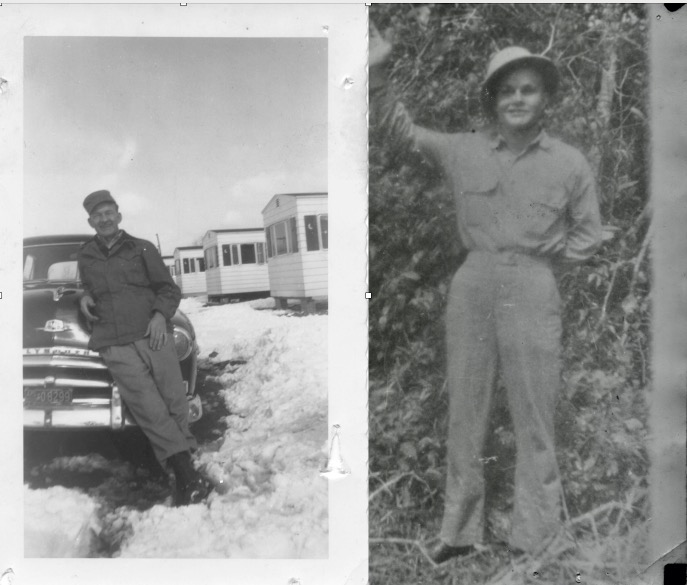
Aunt Sue married M.R. (Jack) Risher – a whole ‘nother branch of the family.
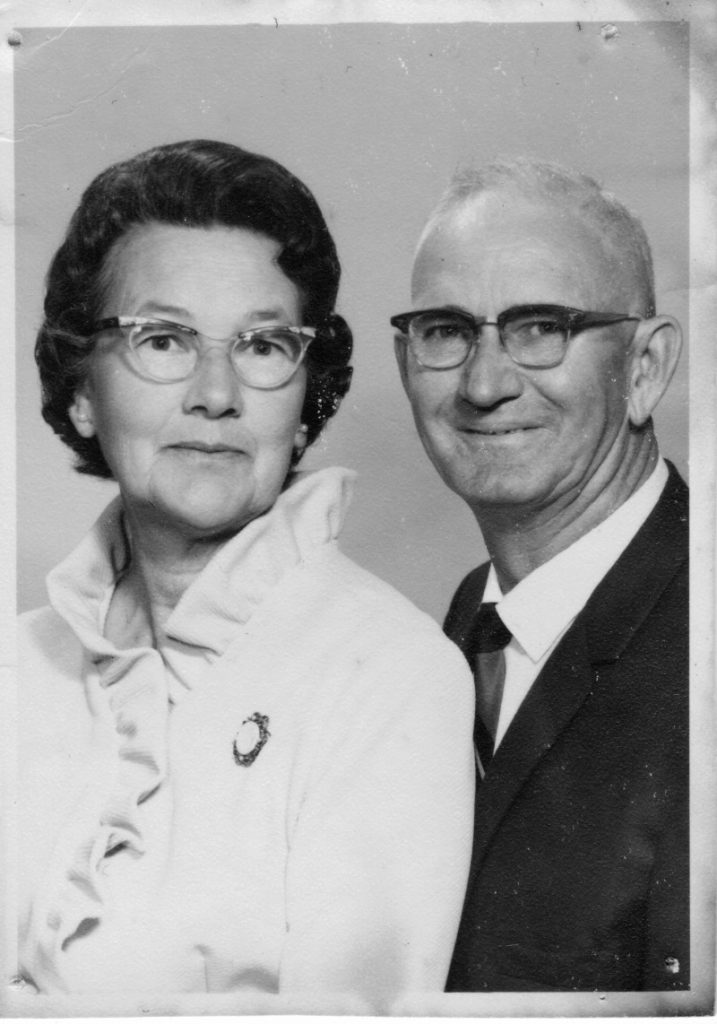
They lived closer to Morton – you might say the suburbs of Pulaski. Any time I went to visit Grandad and Grandmother, I always stopped in at Aunt Sue and Uncle Jack’s. Uncle Jack farmed and worked at the Co-Op in Forest. Aunt Sue made sure you had something to eat every time you visited whether you were hungry or not. It was mandatory you be fed.
Uncle Ray married Minrose Green. She and her brothers lived in downtown Pulaski, next to one of the two general stores.
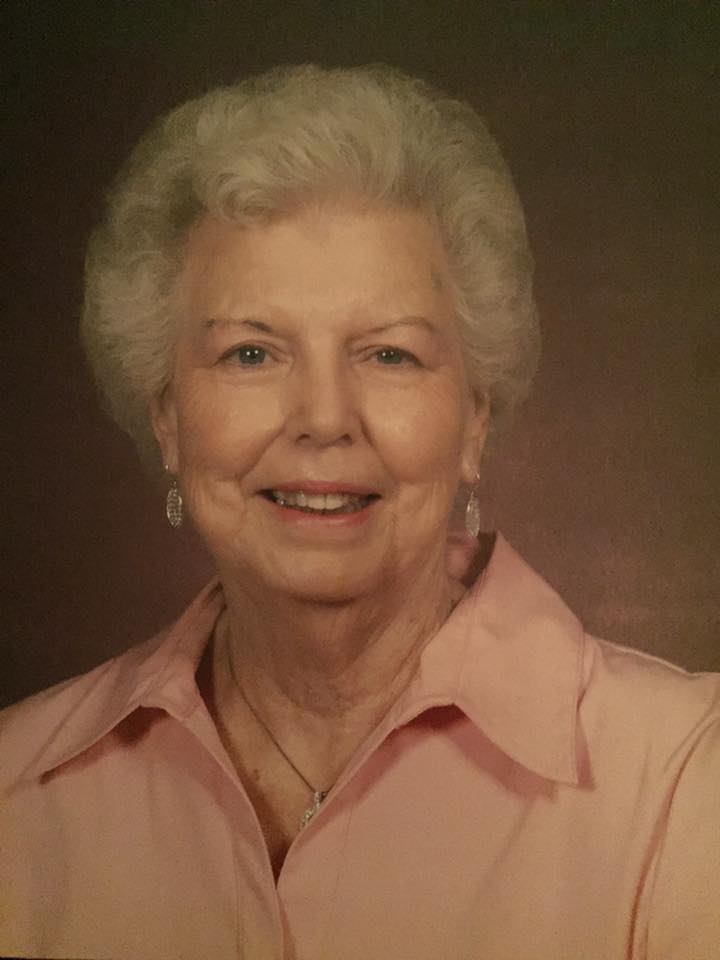
Uncle Ray was pretty much of the temperament of my Dad. They didn’t really show emotion – neither did Aunt Sue. Aunt Minrose was exuberant and outgoing. I loved all of them but whenever Aunt Minrose was around everyone started laughing and having fun. She was, for many years, the town operator – back when you had to go through a switchboard for a phone call. She later retired with the phone company with a decent pension. It was always exciting to pick up the phone and ask for a number to be dialed and find out it was Aunt Minrose on duty that day.
Grandmother Searcy had several brothers and sisters. She was the second youngest of eight children. She was born in 1887. George Gibson Hurst was the oldest of the eight born in 1874. Then Florence Melissa Hurst (1877) James Taylor Hurst – my and Dad’s namesake – (1880) Annie Belle Hurst (1882) Helen Fay Hurst (1885) Rolfe Hunt Hurst (1890) and Wilburn Magruder Hurst in 1898.
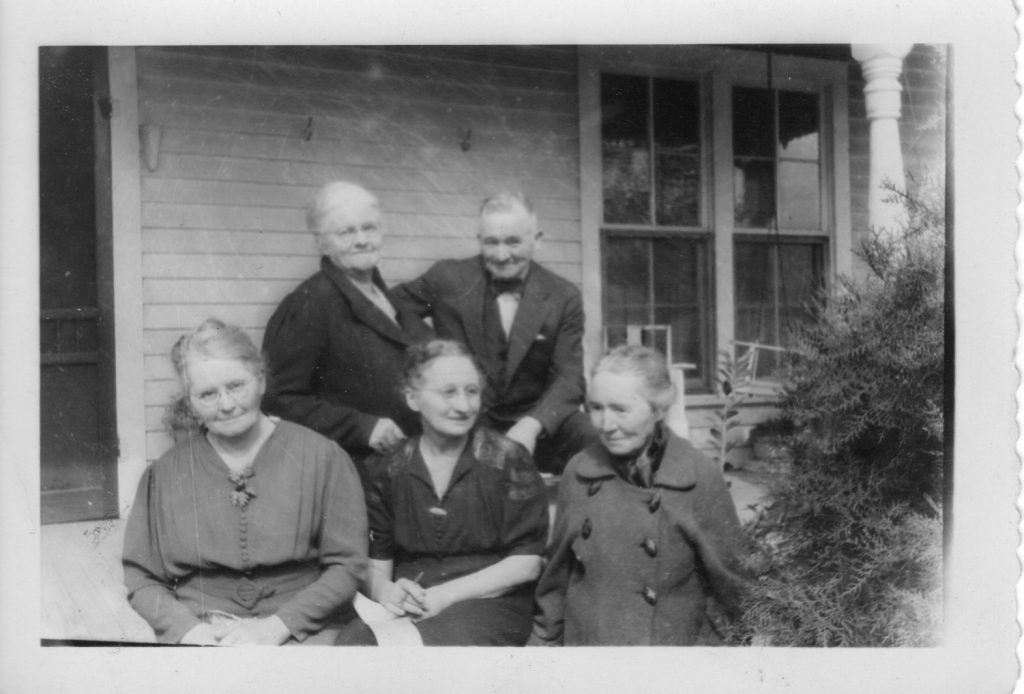
On the Old Place was a blacksmith shop, a barn, a smokehouse and a chicken coop.
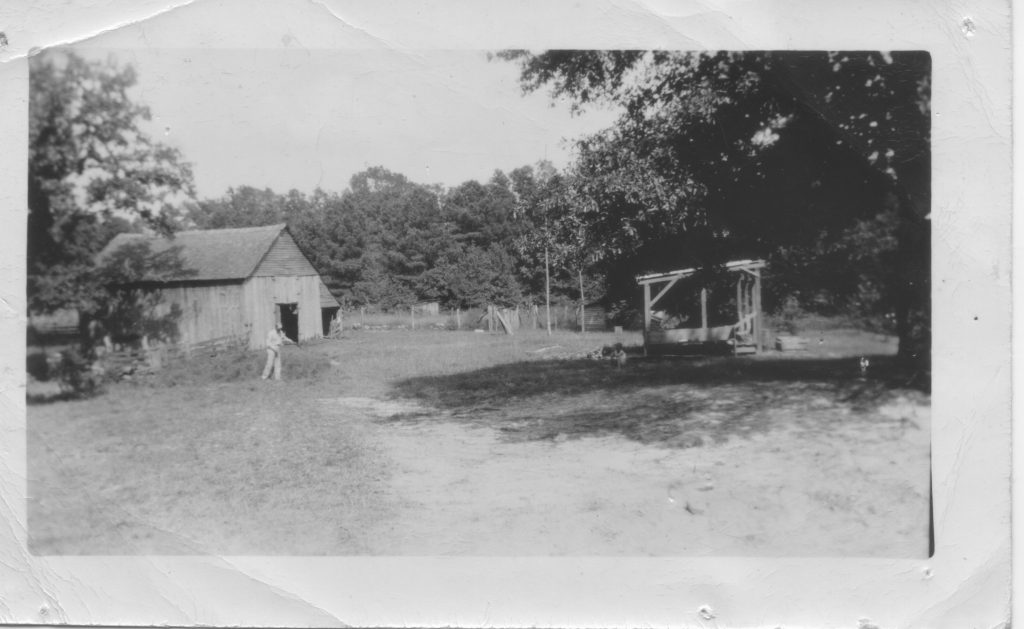
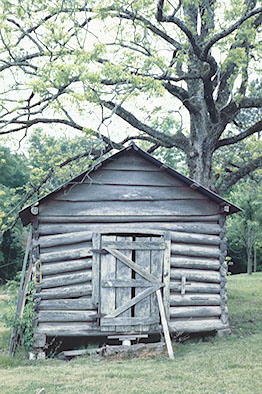
I remember the entire clan gathering on Saturdays. Grandmother would lay out a tremendous spread of food for lunch – all cold because you had to be an idiot to light a wood burning stove in the summer – and we’d all sit around that massive table and eat and talk and laugh. In the afternoon it was watermelon cutting time and we kids would have seed spitting contests off the back porch. There was always a bucket of water with a dipper on the back porch for when you got thirsty and if it got low, you had to go to the well and get more water with a well bucket and windlass.
Summer was a magical time out there. I mentioned the dinner on the ground services but there was also plum season. On the 40 acres of land that Dad was given was a large plum thicket and you could pick two or three bucketfuls in short order. We’d take the buckets back to Grandmother who turned two of the buckets into plum jelly and we kids would polish off one of the buckets. Wild plum jelly is still my favorite jelly.
I learned to shell butterbeans and peas from my Grandmother. Grandad taught me about seed corn and how to shell corn from the cob and how to wipe my ass with a fuzzy corn cob in the outdoor two holer. I took rain showers with lye soap that Grandmother had made. I climbed the magnolia tree in front and got all dirty again. Sybil Jean and I made mud pies in the dirt in front of the house (Grandmother swept the lawn with a broom sage broom – it was the cleanest dirt in town) and we’d pretend to eat them. I learned some of my first flower names from Grandmother’s flower garden and the begonias she grew hanging from pots on the porch. We were very spoiled grandkids and it wasn’t money that spoiled us. I rode my first horse there. I slept in my first feather bed there. I drank milk just pulled from a cow’s udder. And I watched the flames in my first fireplace there. I followed Grandaddy like a dog soaking up his expertise, his soft way of thinking and talking and how he carried himself. Grandmother Searcy’s hugs were really the only kind I had much of as a child and they were enthusiastic, loving, and enveloping.
I can think of a lot of things I’ve enjoyed in my life but my life as a kid at the Old Place was simply idyllic. It enriched me like no other life experience.
Stay safe and stay tuned!
